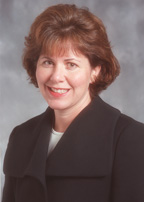WHITE PLAINS, N.Y. — June 2, 2008 — As a place for information, education, communication and entertainment, the Internet provides great opportunities for children to learn and explore. But as with the physical world, learning, exploring and interacting in the virtual world of the Web must happen safely. Within this rich environment, risks to online safety have to be proactively addressed.

Parry Aftab, founder and executive director, WiredSafety
One issue that has emerged recently is “cyberbullying,” where an individual uses the anonymity of the Internet to stalk, threaten or harass another person. As instances of cyberbullying have increased, the issue has drawn the attention of WiredSafety, one of the oldest and largest online “neighborhood watch” groups on the Internet, with more than 13,000 volunteers in 76 countries around the world.
To help raise awareness of the issue, WiredSafety is holding its first International Stop Cyberbullying Conference. The conference will bring together representatives from government, education, law enforcement, the media and technology companies like Microsoft to educate attendees and help spur appropriate action around this important issue.
To get an idea of the event and what else is being done to help address the problem of cyberbullying, PressPass spoke with leading Internet privacy and security attorney Parry Aftab, founder and executive director of WiredSafety, along with Microsoft’s Adrienne Hall, senior director of the Trustworthy Computing Group.
PressPass: What kinds of threats are facing children online, and where does cyberbullying fit into the picture?
Hall: Cyberbullying falls into the harassment category, which can affect not only children but parents and adults as well. Because cyberbullying takes place on the Internet instead of a playground, bullies can follow children and teens anywhere they go online, and it can take several forms. It can involve using e-mail, Instant Messenger (IM) or a social network account to deliberately hassle, harangue, annoy or intimidate others. In some cases, the bully poses as someone else.
Aftab: If you look at the myriad issues we have on the Web today — sexual predators, inappropriate content, piracy and irresponsible use of intellectual property, privacy, reputation — the risks are the same as they are in real life, but magnified because of the anonymity factor. A lot of people do things on the Internet they would never do in real life because they don’t think those on the other side know who they are. Similarly, because you don’t know who’s on the other side, a lot of people could hurt you in ways they wouldn’t be able to in real life.
PressPass: How will this week’s conference help stop cyberbullying?
Aftab: For the first time, we are pulling together all the relevant stakeholders from both the public and private sector to examine cyberbullying and address solutions in a two-day conference sponsored by Microsoft and other leaders. We’re going to have parents and teachers, kids, school administrators, mental health experts, local government groups and tech industry leaders working on the issue. We’ll have workshops to help these stakeholders understand how to manage the risks from within, understand the laws related to cyberbullying, and teach them how to teach kindness to kids.
PressPass: What can parents do to help keep their kids safe online?
Aftab: Parents are putting very powerful technologies into their children’s hands. Younger and younger kids are trending into technologies. And parents are caught like deer in the headlights — even tech-savvy parents — because they use the technology in different ways than the children do. Often new technologies are adopted, used and abused by kids before parents even know these technologies exist.
So, parents need help understanding the risks and how to manage them. They need to talk with kids about responsibility, being accountable, and help kids use that filter between their ears. We need to teach parents what the real risks are — keeping the risks in perspective — and let parents know what they can do to communicate, supervise, and use the right resources and technology tools to help.

Adrienne Hall, senior director, Microsoft Trustworthy Computing Group
Hall: Parents need to keep the lines of communication open with children and teens. Set clear, age-appropriate rules for Internet use. Make sure children aren’t sharing personal information online such as first and last names, addresses, school names, sports teams. Be careful about pictures and videos posted online because a house number or street name might be visible, providing clues that could help criminals locate children. And most importantly, if a child is going to meet an online friend in person, they should always notify and get permission from a parent or other responsible adult. Lastly, just as in the physical world, children and teens need to know that they can and should reach out to a parent or someone in a position of authority if they have concerns or encounter any problems.
PressPass: What resources are available to help parents?
Aftab: There is still a lot of work to be done in building the right resources, but there is a great deal available now. We are building a new social network for moms called “Wired Moms” that’s designed to help them understand the technologies kids are using, to make sure their kids are safe while tapping into the power of social networks. We also have a new project called “Got a Minute?” that’s designed for television broadcasts, to allow parents to learn skills such as understanding some chat lingo, or how to report a problem at a Web site, or reading the privacy policy. It’s something that’s practical that they can learn in a minute or less that will help them keep their families, themselves and their kids safer.
Hall: Microsoft offers tip sheets, educational videos and other guidance for parents on http://www.microsoft.com/protect/family. In addition to advice on how to talk to children and teens about online safety, this site provides guidance on how parents can use technology to help protect children online. While technology is not a substitute for a robust dialogue between parents and children, it can help. We’ve built a number of parental controls into our products such as Xbox Live, the Zune Social network and of course, Windows Vista.
Windows Vista allows parents to determine how much time children spend online. There are ways to determine what maturity level of games children can play. Web content filtering helps parents determine which Web sites children can visit. Vista also has application controls that let parents approve the applications being used and prevent certain downloads.
Parents can also get detailed usage reports to show where the child has been online. We encourage parents to delve into those reports and take an interest in what their children are doing on the Internet.
PressPass: Is WiredSafety working with Microsoft to create more resources?
Aftab: We’re working with Microsoft on a Stop Cyberbullying Toolkit, which will be a DVD and downloadable content. The toolkit is designed to contain everything that parents, teachers and children need, from understanding the problem and how it works, to reporting it at a Web site, getting pictures taken down if necessary, understanding how to track certain information for evidence, and understanding when to call the police. The toolkit also contains animations, videos, peer-to-peer advice, and fun activity sheets to work on with younger children, helping them learn how to use the Internet correctly and safely from the bottom up.
PressPass: How do Microsoft’s Internet safety efforts extend beyond technology?
Hall: In addition to technology, we work closely with Internet safety experts and other organizations. Our approach involves working in partnership with leaders in government, industry and nonprofits to provide guidance and consumer education.
In terms of some of the groups we work with, in addition to WiredSafety, we support efforts by the Anti Defamation League, i-SAFE, Look Both Ways, the National Center for Missing and Exploited Children, the Federal Trade Commission, the International Center for Missing and Exploited Children, UNICEF, ECPAT International and the National Cyber Security Alliance to name a few.
We’ve also created an online safety and security toolkit as a guide to organizing and hosting Internet safety events. It has fact sheets, brochures, posters and other things used for awareness in education. The toolkit also contains three public service announcement videos. There is also an overview that shows exactly how to use the toolkit and how to build an event. We’re trying to get this in the hands of educators, government officials and other organizations, and have already delivered the toolkits in the United States to Members of Congress to help them understand the issues.
PressPass: Why is it important to foster broad cooperation among industry, government, education and nonprofits?
Hall: No one group, individual or company can address all of these issues alone. It takes all of us. Microsoft is working with many organizations to ensure the economic, political and social forces are aligned to effectively address issues of safety and welfare online. Getting all parties involved to speak with the same voice around the world and call people to action has a much more powerful effect than if one individual or entity tries to do it on its own.
Aftab: The challenges of these issues are overwhelming and the only way we can address them is by addressing them together. It takes a tech community to provide the tools and technologies that help keep children safe and to help people understand how to use technologies in safer ways. It requires educators to be involved in both learning about and teaching safe online practices. It requires governments to be involved in putting laws in place when they need to be. And it requires getting the nonprofit, expert and advocate community to tie this all together.
PressPass: What else needs to be done?
Aftab: Never before has so much been coming at us so quickly. Web 2.0 is drastically improving our ability to interact with a wealth of information, resources and people. With interactivity so central to web experiences, the challenges parents face today are light-years more complex than just a few years ago when the Internet was a one-way street. The standard advice of telling kids not to post personal information online is less and less realistic, as connecting with others is now a major reason kids are using the Internet in the first place.
Hall: With online safety, the key — as it has always been — is to make sure parents stay involved in their children’s lives, talking to them, making sure they understand the dangers and use common sense. Conferences like this are a huge step forward in raising awareness and encouraging action. The onus is on us as parents, industry leaders and good online citizens to make sure children have the tools and education to stay safe online. Microsoft and the industry are focused on continuing to raise awareness of the risks, benefits and opportunities that the Internet and increased connectivity bring. By working together we can help make using the Internet a safer experience for everyone.




